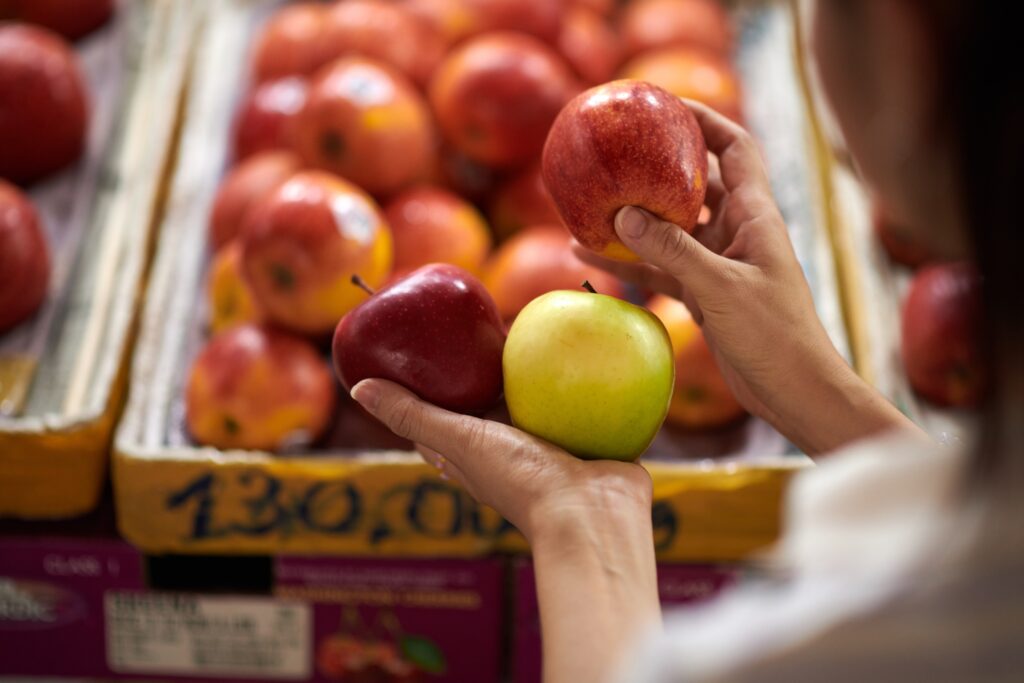What to Know About SNAP Benefits & the Government Shutdown

What you should know
In our busy world, we know how overwhelming it can be to keep up with the news. We wouldn’t blame you if you came across a headline recently about changes to SNAP benefits but still aren’t quite sure what these changes mean or even what SNAP stands for.
To start, the Supplemental Nutrition Assistance Program – formerly known as food stamps – is a federal program that provides food purchasing assistance to low-income families and individuals. An estimated 41.7 million people nationwide depend on the program, using Electronic Benefit Transfer (EBT) cards that are replenished each month, with an average amount of $187 per participant, to purchase food and meet basic nutritional needs, according to the US Department of Agriculture.
The program is directly linked to improving long-term health outcomes, reducing the overall prevalence of food insecurity by 30%. Low-income adults enrolled in the program incur an estimated 25% less in medical costs per year than those not enrolled, according to a 2022 report by the Center on Budget & Policy Priorities.
The Washington Department of Social & Human Services (DSHS) oversees the state’s SNAP program, Basic Food, using federal funds appropriated by Congress each year to provide food purchasing assistance for Washington residents enrolled in the program. According to Washington’s DSHS, nearly 1 million Washingtonians depend on SNAP benefits to feed themselves and their families.
On October 17, Washington’s DSHS alerted Hopelink and social service organizations around the state that they will be unable to administer SNAP food benefits starting on November 1 if they do not receive federal funding, as the federal government remains shut down since October 1.
What this could mean for SNAP recipients
For our community members who use EBT cards to pay for their groceries, those cards will not be replenished with their designated monthly amount come November 1, if the federal government remains closed. The benefits won’t be allocated until the federal government reopens.
Public Health – Seattle & King County estimated nearly 118,000 King County residents received SNAP benefits in 2023. Hopelink predicts that as distribution of SNAP benefits is disrupted, we will see a significant increase in visitors to the five no-cost Hopelink Food Markets and Mobile Market as community members work to fill the gap created by the absence of SNAP benefits.
The fact is that thousands of households in our region are already struggling. Our 2025 Community Needs Assessment shows us that over 135,000 people in North and East King County – roughly one in every five people – don’t have enough money to meet their basic needs. These households are already having to make incredibly difficult decisions every single day about what essential needs they should meet first with the finite resources they have available. The gap created by this disruption in SNAP funds will be devastating for these community members, making these decisions even harder.
This can look like people using funds they currently use to pay for prescriptions, housing costs, utility bills, childcare, or other necessities to pay for food. In this situation, we sometimes see parents forgoing sufficient food themselves so their children can eat. Falling behind on these essentials can quickly add up and compromise someone’s health and financial stability, often leading to a cascading financial crisis.
This is why Hopelink is preparing for increased needs across all of our program areas, including Food, Financial Assistance and Energy Assistance.
As shown in our 2025 Impact & Annual Report, we’ve seen needs rise significantly over the past year. In fact, we recorded a 24% increase in visits to Hopelink Food Markets in the 2025 fiscal year and marked our highest ever-recorded number of people enrolled in the Food Assistance program. For every person we were able to issue flexible financial assistance, there were another 15 people who also called and needed our help.
Due to these compounding hardships, Hopelink will be offering additional food to all shoppers during visits to our food markets.
How you can help
Our community is facing extraordinary challenges. But, we know we’re facing them together and are beyond grateful for the dedication of the Hopelink community. Please consider taking any of the following actions below to support our community members impacted by these disruptions:
- Make a monetary contribution: Gifts of any amount to address greatest needs provide vital flexible support when needs increase across our programs.
- Donate food to a Hopelink Food Market: Hopelink accepts in-kind food donations at any of our five markets. You can give by donating non-expired items from your pantry, shopping from our most-needed items list, or purchasing directly from our Amazon Wish List.
- Start a food or fund drive: You can make a big impact when you gather your neighborhood, school, place of worship, or friend group chat with a drive for our Lend a Hoping Hand campaign.
- Volunteer: The Hopelink Food Markets are powered by volunteers! Get in on the action by signing up to volunteer at one of our locations.
- Join the Circle of Hope: By giving a set amount each month, Circle of Hope members provide sustainable support throughout the year.
To learn more about the growing needs in our region, explore Hopelink’s recently released 2025 Community Needs Assessment.
